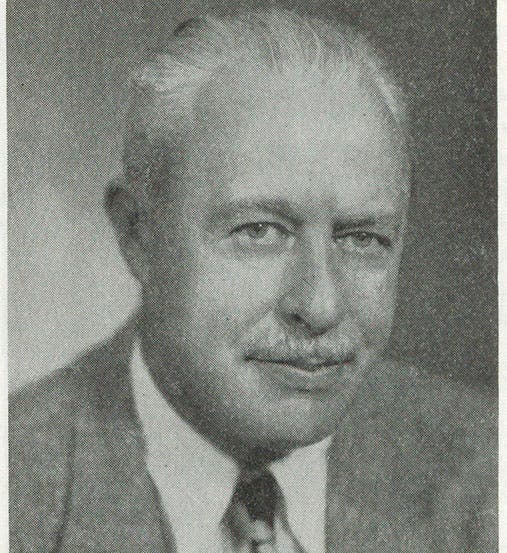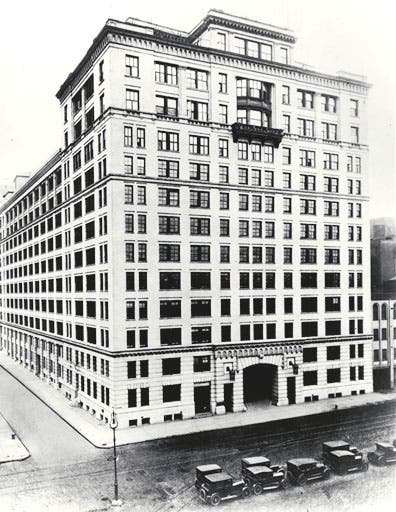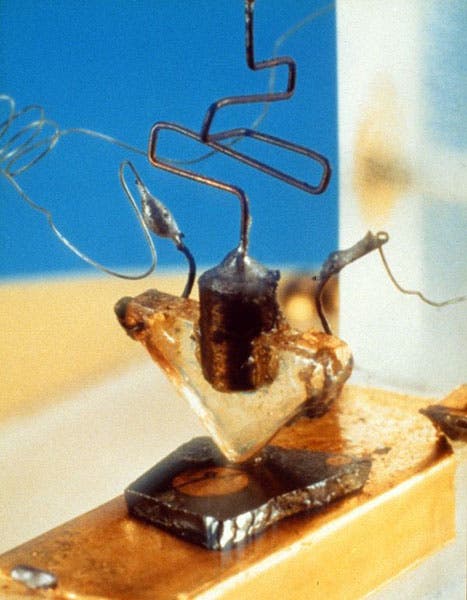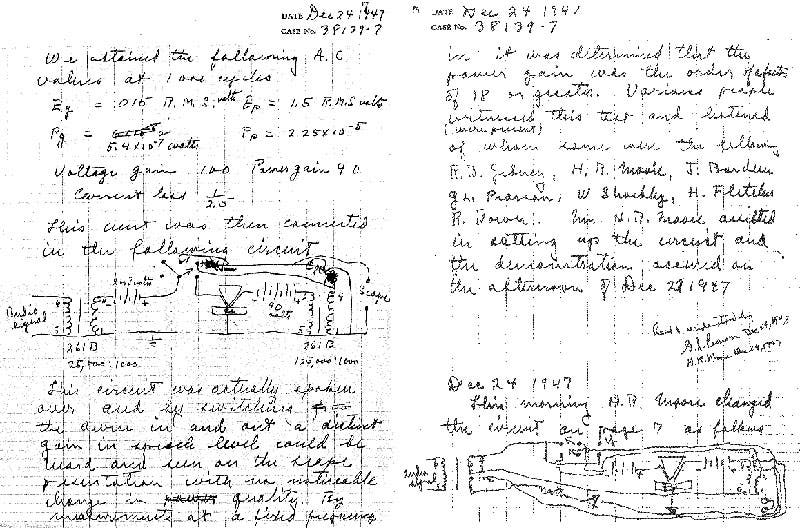Scientist of the Day - Walter Brattain
Walter Brattain (first image), an American physicist, was born on February 10, 1902 in Amoy (present-day Xiamen), China, where his father had been hired as a math teacher at a private school. Both of his parents had grown up in the state of Washington, and a year after Walter was born, they decided to return to the Pacific Northwest in order to be closer to their families. As a result, Brattain spent most of his childhood on a cattle ranch near the Canadian border, where he became a skilled rider and marksman. In 1920, Brattain matriculated at Whitman College, a liberal arts school in Walla Walla, Washington. He majored in physics and, after graduation, pursued a master’s degree in the subject at the University of Oregon and a doctorate at the University of Minnesota. At the time, America was considered something of a scientific backwater, but Brattain arrived in Minneapolis just in time to attend some of the first quantum mechanics classes in the United States. This coursework, along with the laboratory experience he acquired while working on his dissertation, enabled him to secure a position at Bell Labs, the research and development branch of the American Telephone & Telegraph Company (AT&T) (second image).
Brattain arrived at Bell Labs in 1929 and remained a member of that organization’s technical staff for nearly four decades. Most of his research focused on the behavior of electrons in solids, rather than within a vacuum. AT&T had relied upon vacuum tubes to construct the American telephone system. These tubes could both detect and amplify electrical signals, but they were fragile and required large amounts of power. Brattain was part of a team that sought to replace them using semiconductors: materials that conducted electricity better than insulators like rubber but not as well as metals like copper. Brattain partnered with fellow physicist John Bardeen to investigate how electrons move on the surface of silicon and germanium. Bardeen provided theoretical insights, while Brattain carried out the actual experiments. Together, they hoped to construct a semiconductor device that mimicked the functions of a vacuum tube. On December 16, 1947, they succeeded. The first version of their invention consisted of a small triangular piece of plastic suspended above a sliver of germanium. Despite its proximity, the plastic did not actually come into contact with the semiconductor. Instead, Brattain wrapped a piece of gold foil around the wedge and used a razor to slice it in half at the vertex (third image). After carefully positioning the resulting contacts on top of the germanium, he applied a voltage to the system and confirmed that it could amplify an incoming electrical signal.
Brattain and Bardeen reported their results to the head of the Bell Labs semiconductor group, William Shockley. Shockley, who had envisioned the creation of a solid-state replacement for the vacuum tube in the 1930s, recognized the significance of their work and arranged a demonstration for the organization’s management team on December 23, 1947. Brattain described the event in his lab notebook the following day: “This circuit was actually spoken over and by switching the device in and out a distinct gain in speech level could be heard and seen on the scope presentation with no noticeable change in quality. By measurements at a fixed frequency in it was determined that the power gain was the order of a factor of 18 or greater.” (fourth image)
Bell Labs executives recognized that Brattain and Bardeen’s amplifier had the potential to transform the electronics industry. The two scientists filed a patent application for their new “Three-electrode circuit element utilizing semiconductive materials,” while company executives scrambled to find a less cumbersome name for their invention. They eventually settled on “transistor,” a portmanteau combining “transconductance” (or “transfer”) and “varistor” (a variable resistor). At the end of June 1948, Bell Labs announced their new invention at a Manhattan press conference, and in September, the transistor was featured in Electronics, a leading industry trade journal (fifth image).
AT&T executives cited the transistor as evidence that investing in fundamental science could lead to the development of useful technologies. Behind the scenes, however, tensions were beginning to emerge within Bell Labs’ semiconductor team. Early on, Shockley worried that his earlier attempts to create a solid-state amplifier were being overshadowed by Bardeen and Brattain’s successful prototype. He demanded to be included in any discussions of the transistor’s origins, even replacing Brattain at the workbench in publicity photographs. At the same time, Shockley accelerated research on a new kind of transistor that eliminated the need for external contacts by positioning different types of semiconductors in direct contact with each other. This “junction transistor” ultimately replaced Bardeen and Brattain’s design, and Shockley took pains to limit the other two researchers’ involvement in its development to avoid being upstaged again. As a result of these efforts, Shockley shared the 1956 Nobel Prize in Physics for the invention of the transistor with Bardeen and Brattain. By then, Bardeen had departed Bell Labs for a faculty position at the University of Illinois, where he eventually earned a second Nobel Prize for his research into superconductivity. Shockley had also left the firm to establish his semiconductor company in California, setting the stage for the emergence of Silicon Valley. Only Walter Brattain remained at AT&T. The man who built the first transistor continued to explore the electronic properties of semiconductors until leaving Bell Labs in 1967. After that, like his parents before him, he felt compelled to return to the Pacific Northwest, breaking up the monotony of retirement by teaching physics classes at his alma mater, Whitman College. Benjamin Gross, Vice President for Research and Scholarship, Linda Hall Library. Comments or corrections are welcome; please direct to grossb@lindahall.org.










